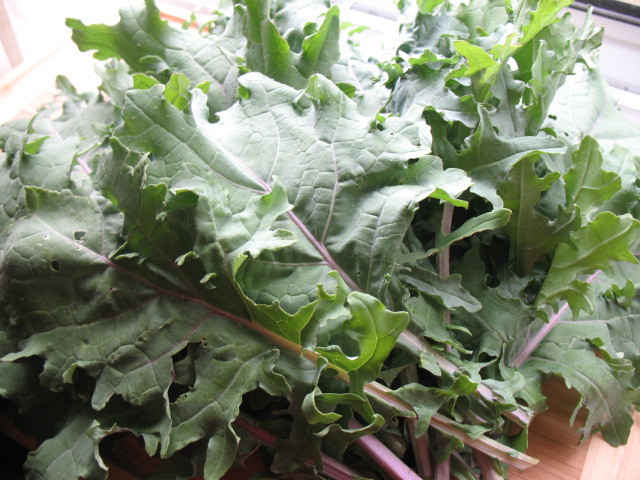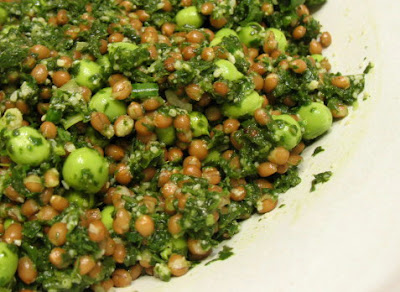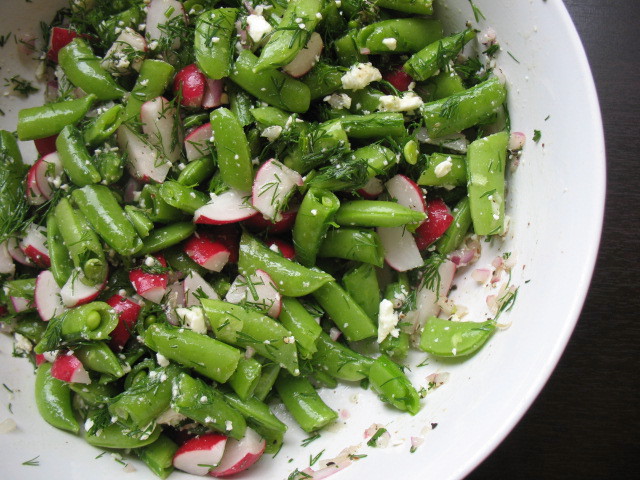This might not be the prettiest dessert to appear in a
photograph. My continued failure to snap shots of it in full daylight probably
didn’t help that much, either. (What can I say? I tend to eat dessert in the
evening.) But one bite of this somewhat less attractive duckling will reveal
its swan nature. If you like rhubarb, that is.
Instead of a rhubarb studded custard, the filling for this
pie is really a large pile of well-sweetened rhubarb held together by a small
amount of custard. It’s kind of pie magic, really. Rhubarb is notoriously juicy
and often, at least in my experience, makes for runny or gooey desserts (not
that there’s anything wrong with that.) This little bit of custard, just two
eggs and a splash of milk in a 9-inch double-crusted pie, corrals the unruly
rhubarb, making it stand high in a cohesive, cobbled wall in every slice.
It’s also fabulously delicious. Again, that is if you like
rhubarb. It loses none of its perky, tart character, but bakes into soft,
fruity bites enhanced by brown sugar, a whiff of cinnamon and just a splash of
vanilla. I went with the brown sugar because I was out of white sugar (?!), and
knew it was good in
this rhubarb compote. I have no regrets about the brown sugar, nor the bit of vanilla
I also added (again, inspired by the compote.) This pie is somewhat rich (hey,
its custard encased in two pie crusts), so I’d suggest being serious about
wanting dessert before diving in. The tart fruitiness of the rhubarb does keep
it at least a little bit light on the palate, however, and the amount by which
it outweighs the custard makes it feel like a fruit pie rather than a heavy
custard or cream pie.
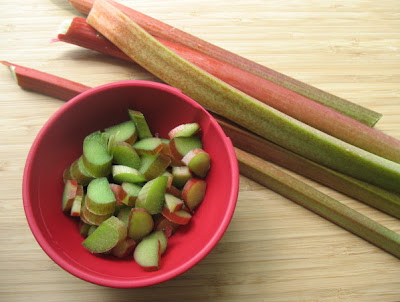
While I had plenty of fresh rhubarb from my own plants to
use, according to the original recipe, you could use frozen rhubarb. The
authors suggest you let it stand in the sugar mixture (Step 2 in the recipe
below) until partially thawed (15-30 minutes) and bake it an extra 25 minutes
(Step 5). This is a big pie for two people to eat, so I won’t be making it
again right away (the leftovers have been keeping well in the refrigerator),
but if I ever do get a chance to try it with frozen rhubarb, I’ll update the
recipe with suggested changes.
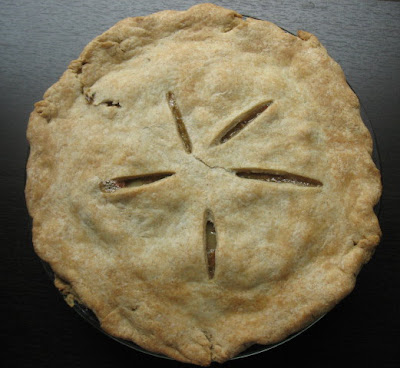
You could use any double-crust pastry for this pie,
including unbaked store-bought pie crusts. Actually, making the pastry and
slicing the rhubarb are the most difficult parts of this recipe, so buying
crusts might just be a good idea. I made an all-butter crust with some whole
wheat pastry flour and I whipped it up in the food processor to save some labor.
It turned out to be one of my best attempts at pie crust, so I’m glad I made
the effort. It held together well and made a pretty fantastic case for this
really fantastic custard-wrapped rhubarb filling.
I really think this is my new favorite rhubarb dessert. I
was thrilled by the full flavor and pleasantly surprised by the sturdy texture.
It’s a very happy spring dessert, or perhaps a dessert with which to say “Happy
Spring"...and if you don't happen to like rhubarb, never fear. The strawberries are here early this year!!
Rhubarb Custard
Pie
See the text above for
suggestions on using frozen rhubarb.
Remember, this pie
bakes for nearly an hour and requires 4 hours of cooling time, so plan
accordingly!
Pastry for a double-crust pie (I used the Whole Wheat Pastry
recipe below)
4 cups fresh rhubarb, thinly sliced
1 ½ cups light brown sugar
¼ cup all-purpose flour
½ teaspoon cinnamon
1/8 teaspoon salt
2 large eggs
2 tablespoons milk
½ teaspoon vanilla extract
1. Preheat oven to 375 F. On a floured surface, roll out
half of the pastry (one of the prepared disks from the recipe below) into about
a 12-inch circle about 1/8-inch thick, or unroll one packaged pie pastry.
Gently drape the pastry into a 9-inch pie plate, arranging it so that it fits
well, and being sure not to stretch it. Roll out the second pastry disk the
same way as the first (or unroll a second prepared pastry). Set aside.
2. Place the sliced rhubarb in a large bowl. Add the brown
sugar, flour, cinnamon and salt, and toss to coat the rhubarb.
3. In a small bowl, whisk together the eggs, milk and
vanilla extract until the eggs are well beaten. Pour over the rhubarb mixture
and stir to combine evenly.
4. Pour or spoon the rhubarb mixture into the pastry-lined
pie plate. Lay the second crust over the filling, being careful not to stretch
it. Press the excess crust together at the rim of the pie plate. Trim if there
is too much excess. Crimp, or flute as desired. (I don’t do anything fancy.)
Cut a few slits in the top of the crust to allow steam to escape.
5. Cover the edges of the pie crust with aluminum foil to
keep it from overbrowning in the oven. Bake at 375 F for 25 minutes. Remove the
foil from the crust. Bake an additional 20-25 minutes or until the crust is
golden brown. Remove from the oven and place on a wire cooling rack. Cool at
least 4 hours.
Makes at least 8 servings. I think it’s a good idea to
refrigerate the leftovers, which are still pretty good after a couple days.
Whole Wheat Pastry
This is a
food-processor method for pastry. You could cut in the butter and mix in the
flour by hand if desired.
1 cup all-purpose flour
1 cup whole wheat pastry flour
½ teaspoon fine salt
11 tablespoons cold unsalted butter, cut into small pieces
1/3 cup ice water, plus more as needed
1. Place the flours, salt and butter pieces in the bowl of a
food processor. Pulse until the butter is cut into pieces the size of small
peas that are well-coated with flour.
2. Add about 2/3 cup water and pulse until the mixture can
be squeezed together to make a crumbly dough. Add more water if needed.
3. Remove the dough from the processor and divide into two
equal balls. Firmly press the balls into disks, wrap in plastic wrap and chill
at least 1 hour or until ready to use. (I ended up chilling mine for a whole
day.)
Make enough pastry for 1 double-crust pie or 2 single-crust
pies.




